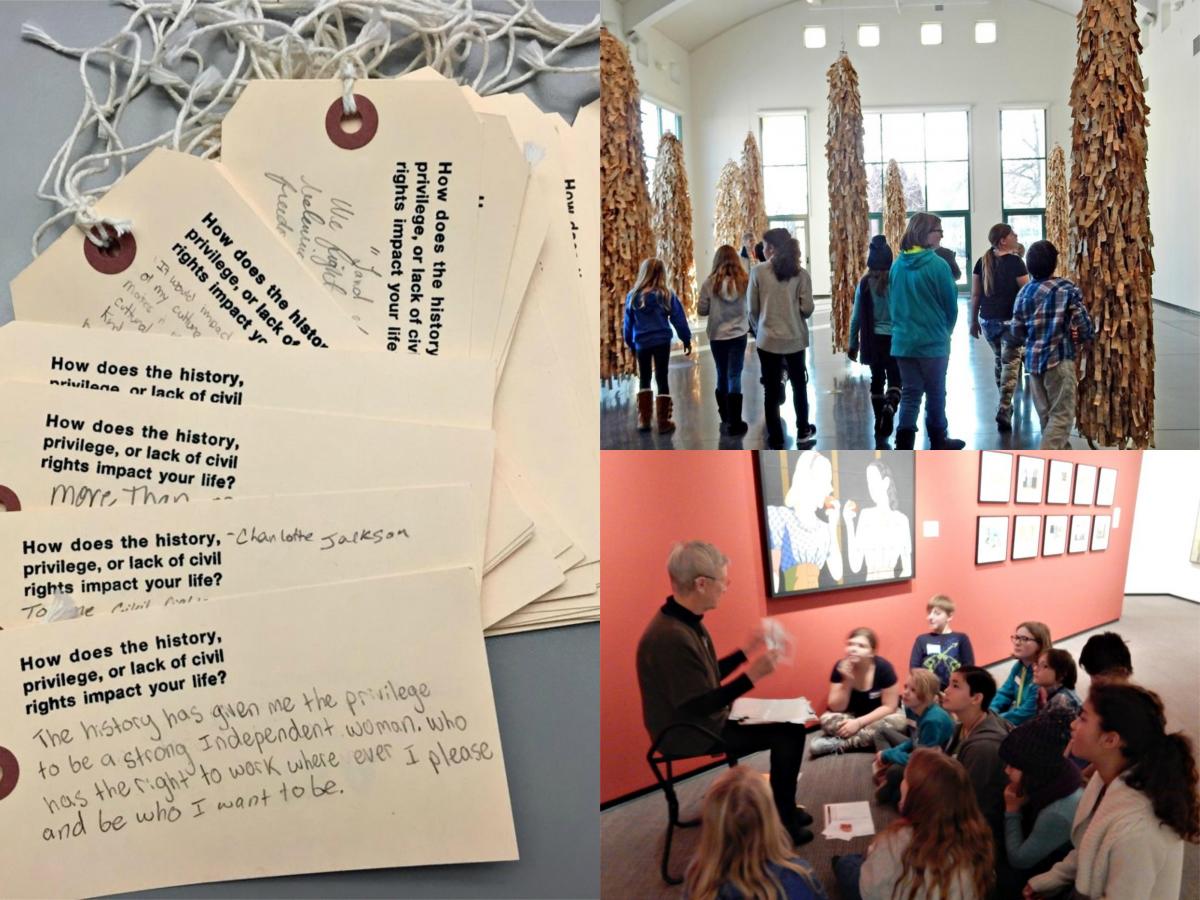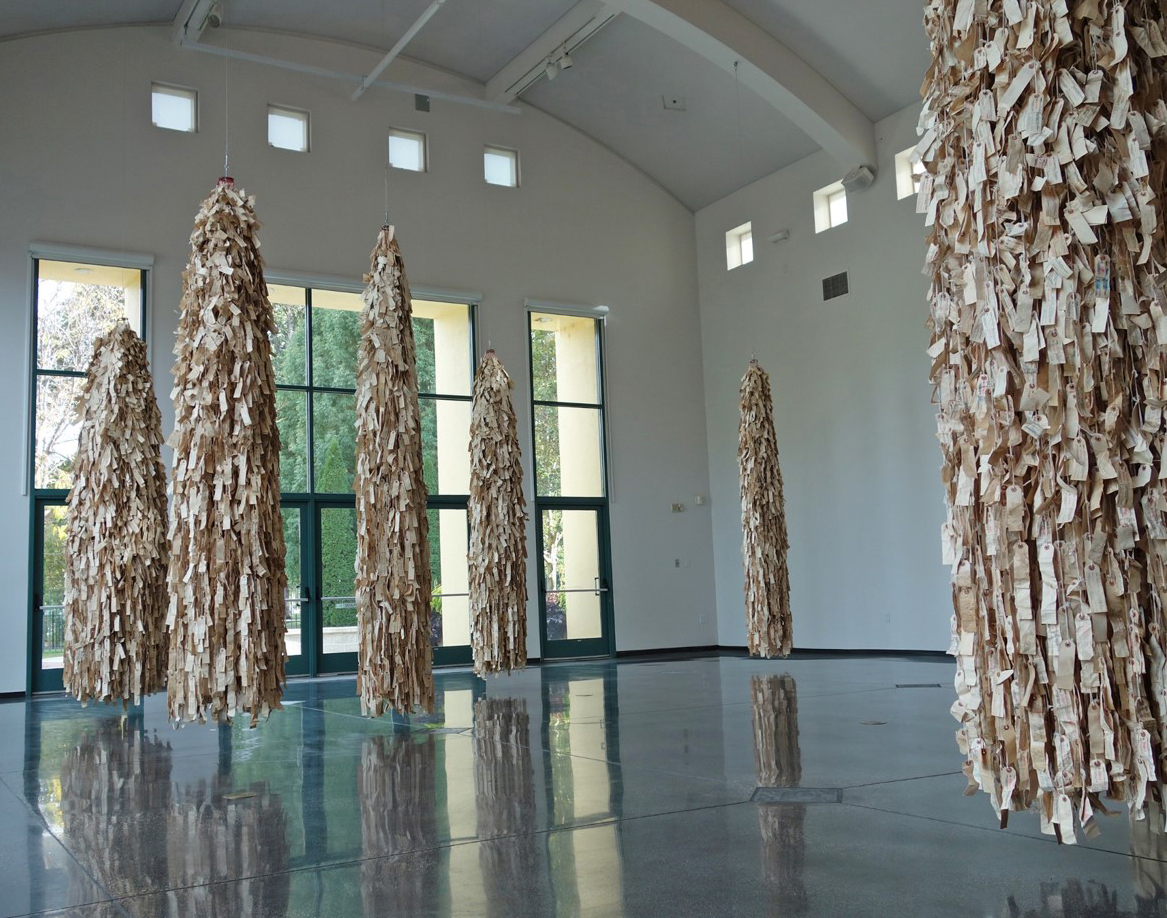
By Melanie Fales
I am grateful to the Western Museums Association and the Charles Redd Center for Western Studies for this recognition of Minidoka: Artist as Witness, an original exhibition organized by the Boise Art Museum. The award reinvigorates our work and gives us a sense of great pride.
Boise Art Museum is located just 130 miles away from Minidoka, yet most residents in our urban area are unfamiliar with the history of this rural site. Even fewer people are aware of the visual art production that occurred at the site during WWII and that has continued today as a result of this historical event. This project was intended to provide a powerful and personal means to share the perspectives of the artists and to make people aware that the human endeavor of art continues to flourish under even the most adverse conditions. The Museum hoped to open a dialogue with our community and visitors about this nearby National Historic Site and the artistic pursuits that resulted from the single largest forced relocation and incarceration in U.S. history.
Following the bombing of Pearl Harbor, President Franklin D. Roosevelt issued Executive Order 9066, which forced 120,000 Japanese American citizens and legal resident aliens of Japanese ancestry from Washington, Oregon, California, and Alaska to move to 10 inland war relocation centers, as the government called them at that time. From 1942 to 1945, more than 13,000 individuals lived at Camp Minidoka in south central Idaho in tar-paper-covered barracks surrounded by guard towers and barbed-wire fences. The structures no longer exist, but the memories of the incarceration live on for those who spent years of their lives in Minidoka and for their families today. This project provided the opportunity for us to link the artistic representations of the experiences, and their lasting implications, to the historic site in a way that had not been done in the past.

Contemporary art is often meant to prompt a dialogue about difficult subject matter concerning humanity. The Museum intended to present a safe space for artists and audience members to discuss the events that took place in our state during that time by focusing on the artistic processes of documentation and response.
Each of the five artists represented in the exhibition are/were Japanese Americans with personal ties to the wartime experience. Three of the artists whose works were included in the exhibition – Takuichi Fujii (1891 – 1964), Kenjiro Nomura (1896 – 1956) and Roger Shimomura (1939 - ) – were relocated to Minidoka from Seattle, Washington, with their families during WWII. Fujii and Nomura created artwork in Camp Minidoka. Roger Shimomura, Wendy Maruyama (1952 - ) and Teresa Tamura (1960 - ) are all contemporary artists creating artwork today.
It was crucial for us, when carrying out this project, to reach out into the community to draw upon the wisdom and scholarship of our friends and neighbors. We sought help from the Honorary Consul General of Japan in Idaho, Minidoka scholars, The Friends of Minidoka, the Minidoka National Historic Site, The Snake River Japanese American Citizens League, Boise Valley Japanese American Citizens League, Boise State University Minidoka Civil Liberties Symposium, Four Rivers Cultural Center in Ontario, Oregon, Tacoma Art Museum, and the Museum of Craft and Design in San Francisco. We also convened individuals in a Community Advisory Committee. They helped us with outreach into the community, research, checking our language in our text panels and descriptions, and with funding for the project.
The exhibition was successful in connecting people to the issues around the events of WWII and growing their understanding and knowledge about our local and world history, and I would even say in developing empathy for others by witnessing it through the eyes of the artists.

Perhaps some of the best evidence of the impact of the project can be seen in the comments our visitors left in response to questions we printed on tags modeled after the tags Japanese Americans were required to wear when being relocated during WWII.
- How does the history, privilege, or lack of civil rights impact your life?
- When you or your ancestors have moved, what did your family take or leave behind?
Here are just a few comments from visitors.
“Thank you for this exhibit. I was completely uneducated to the occurrence of rounding Japanese people into internment camps during the war. Amazing that this history was left out of my American public school books.”
“I’m originally from California, I was aware of the camps there and had done some reading. I was not aware of Minidoka when we moved to Idaho many years ago. It reminds me that we are always at risk of repeating the sad events of past history when fear takes over reason.”
“I enjoyed seeing artwork by Japanese internees as first-person accounts and reflections.”
Student comment: “Even though I wasn’t one of the people incarcerated, all the tags made me remember how people have judged me and some of my friends. All those people were judged too. It really made me think.”
Teacher comment: “Eye-opening for students to see visual art in sculpture room – how many lives were affected. It provides real life examples of events in history – relevant to where they live and the rights of citizens.”
“The exhibit confirmed and supported what I knew. I’m a sensei (3rd generation in U.S.) whose entire family was incarcerated, except for an uncle who served and died with the 442nd Regimental Combat Team. The artwork reminds me that racism and prejudice still exist and are difficult for some people to overcome. We who believe otherwise need to speak up at every opportunity to defend human rights and diversity. NO matter how many times I watch videos, visit exhibits, and read books on the topic, I get very emotional and angry while being grateful for what my family endured and their ability to move forward and start over.”

______________________________________________
Minidoka: Artist as Witness recieved the 2017 Charles Redd Center for Western Studies Award for Exhibition Excellence. Melanie Fales has served as the Executive Director/CEO of the Boise Art Museum since 2008. Melanie is a native of Idaho, and she did not learn about the WWII incarceration camp in Minidoka, Idaho, until after she had graduated from college.








Add new comment